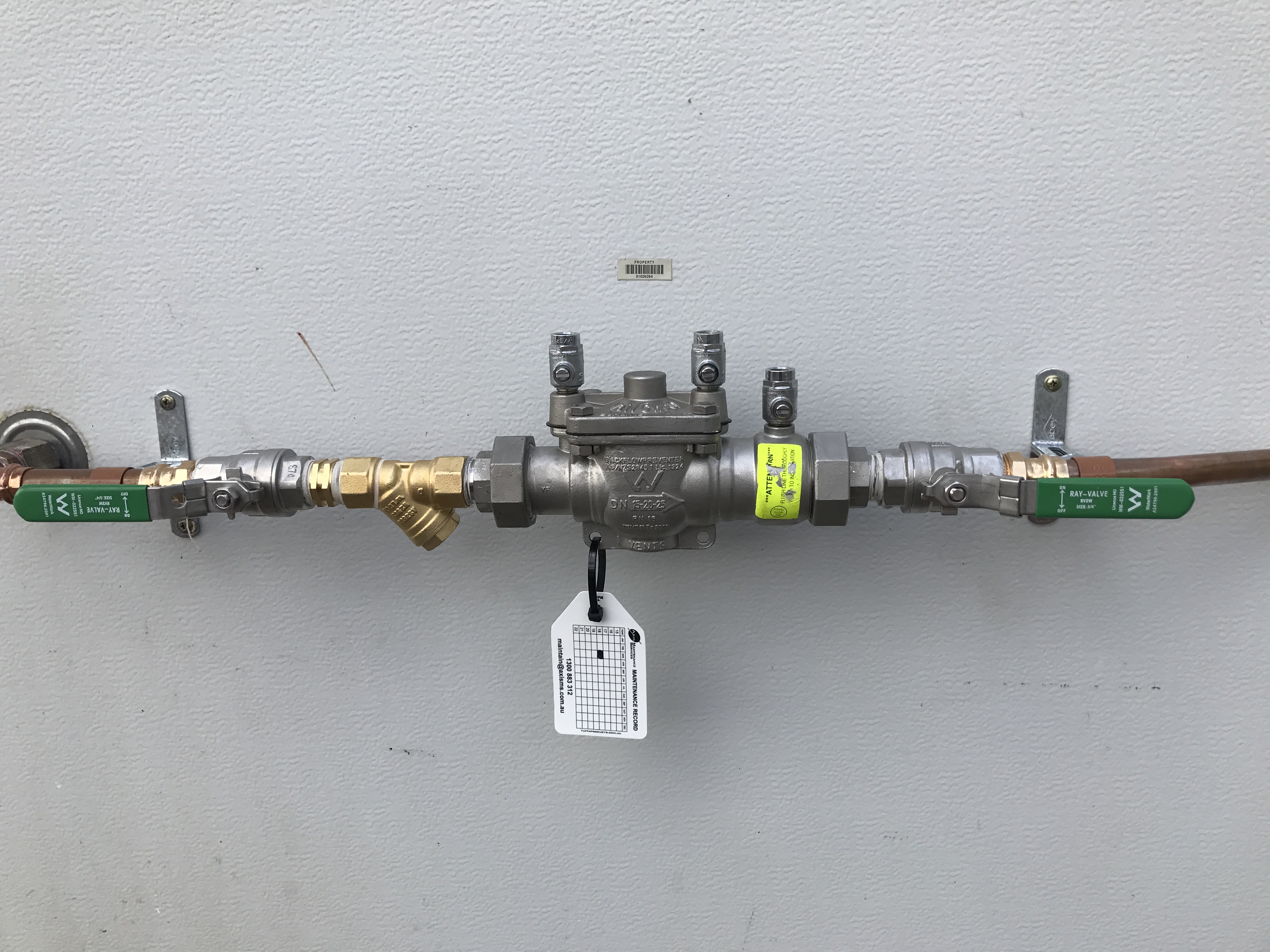Back siphonage

|
| This backflow prevention device includes a valve assembly with isolation valves and strainer. |
Collins Complete Do-It-Yourself Manual was published in 1986. It was created for William Collins Sons & Co. Ltd. by Jackson Day and conceived by Jackson Day Jennings Ltd.
It defines back siphonage as: ‘The siphoning of part of a plumbing system caused by the failure of mains water pressure’.
The negative pressure (or vacuum) that results in back siphonage can happen under conditions such as a water mains break or an increased use of water for fire fighting or construction purposes. When the vacuum occurs and the supply pressure decreases, back siphonage causes the water flow (or other liquid substances) to reverse.
Back siphonage may result in contaminated water being pulled into the clean water supply. This action is referred to as backflow. Backflow can also take place due to back pressure, which can occur when there is higher pressure in the system than in its supply. This can happen in certain types of heating systems where the pressure is increased for some reason (such as thermal expansion in unvented systems).
[edit] Preventing back siphonage
Air gaps can be used to help prevent both back siphonage and backflow. An air gap is a cleared vertical space that is placed in a way that allows it to control the water supply. These gaps can be used to regulate the pressure.
An atmospheric vacuum breaker (or AVB) can be used to prevent back siphonage. It is a type of backflow prevention device that can be used in situations where it is not possible to create an air gap.
Water-using appliances must provide an acceptable degree of protection against backflow or back siphonage. These parameters are determined in BS 6280:1982 Method of vacuum (backsiphonage) test for water-using appliances. Recommendations are also proscribed under the Water Supply (Water Fittings) Regulations 1999.
[edit] Related articles on Designing Buildings
- Backflow.
- Mains water.
- Plumbing.
- Potable water.
- Siphon.
- Vacuum breaker.
- Warning pipe.
- Water consumption.
- Water Services Regulation Authority.
- Water Supply (Water Fittings) Regulations 1999.
[edit] External resources
Featured articles and news
RTPI leader to become new CIOB Chief Executive Officer
Dr Victoria Hills MRTPI, FICE to take over after Caroline Gumble’s departure.
Social and affordable housing, a long term plan for delivery
The “Delivering a Decade of Renewal for Social and Affordable Housing” strategy sets out future path.
A change to adoptive architecture
Effects of global weather warming on architectural detailing, material choice and human interaction.
The proposed publicly owned and backed subsidiary of Homes England, to facilitate new homes.
How big is the problem and what can we do to mitigate the effects?
Overheating guidance and tools for building designers
A number of cool guides to help with the heat.
The UK's Modern Industrial Strategy: A 10 year plan
Previous consultation criticism, current key elements and general support with some persisting reservations.
Building Safety Regulator reforms
New roles, new staff and a new fast track service pave the way for a single construction regulator.
Architectural Technologist CPDs and Communications
CIAT CPD… and how you can do it!
Cooling centres and cool spaces
Managing extreme heat in cities by directing the public to places for heat stress relief and water sources.
Winter gardens: A brief history and warm variations
Extending the season with glass in different forms and terms.
Restoring Great Yarmouth's Winter Gardens
Transforming one of the least sustainable constructions imaginable.
Construction Skills Mission Board launch sector drive
Newly formed government and industry collaboration set strategy for recruiting an additional 100,000 construction workers a year.
New Architects Code comes into effect in September 2025
ARB Architects Code of Conduct and Practice available with ongoing consultation regarding guidance.
Welsh Skills Body (Medr) launches ambitious plan
The new skills body brings together funding and regulation of tertiary education and research for the devolved nation.
Paul Gandy FCIOB announced as next CIOB President
Former Tilbury Douglas CEO takes helm.
UK Infrastructure: A 10 Year Strategy. In brief with reactions
With the National Infrastructure and Service Transformation Authority (NISTA).






















